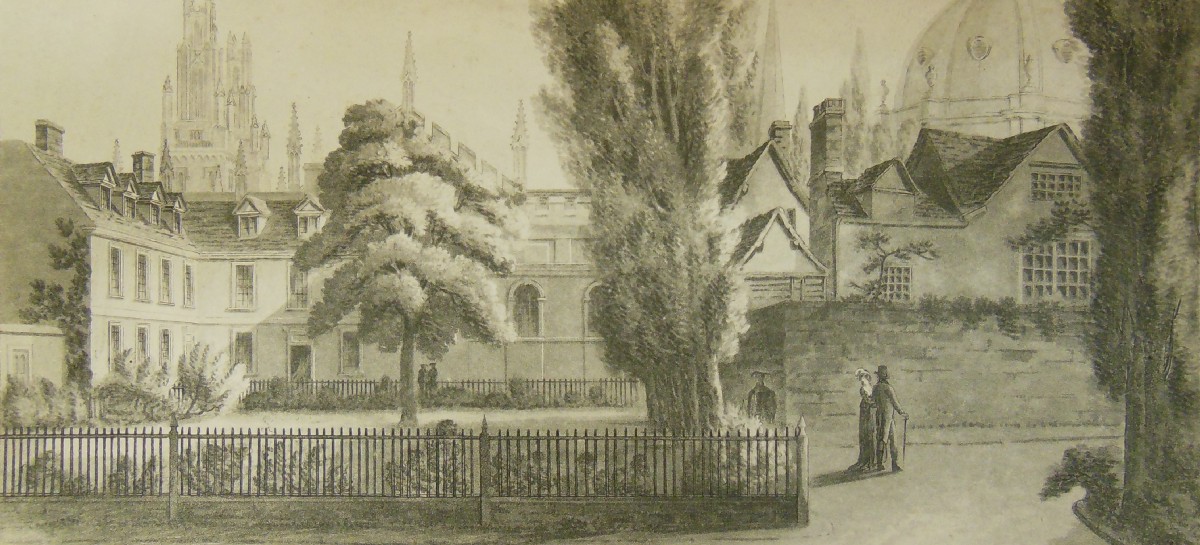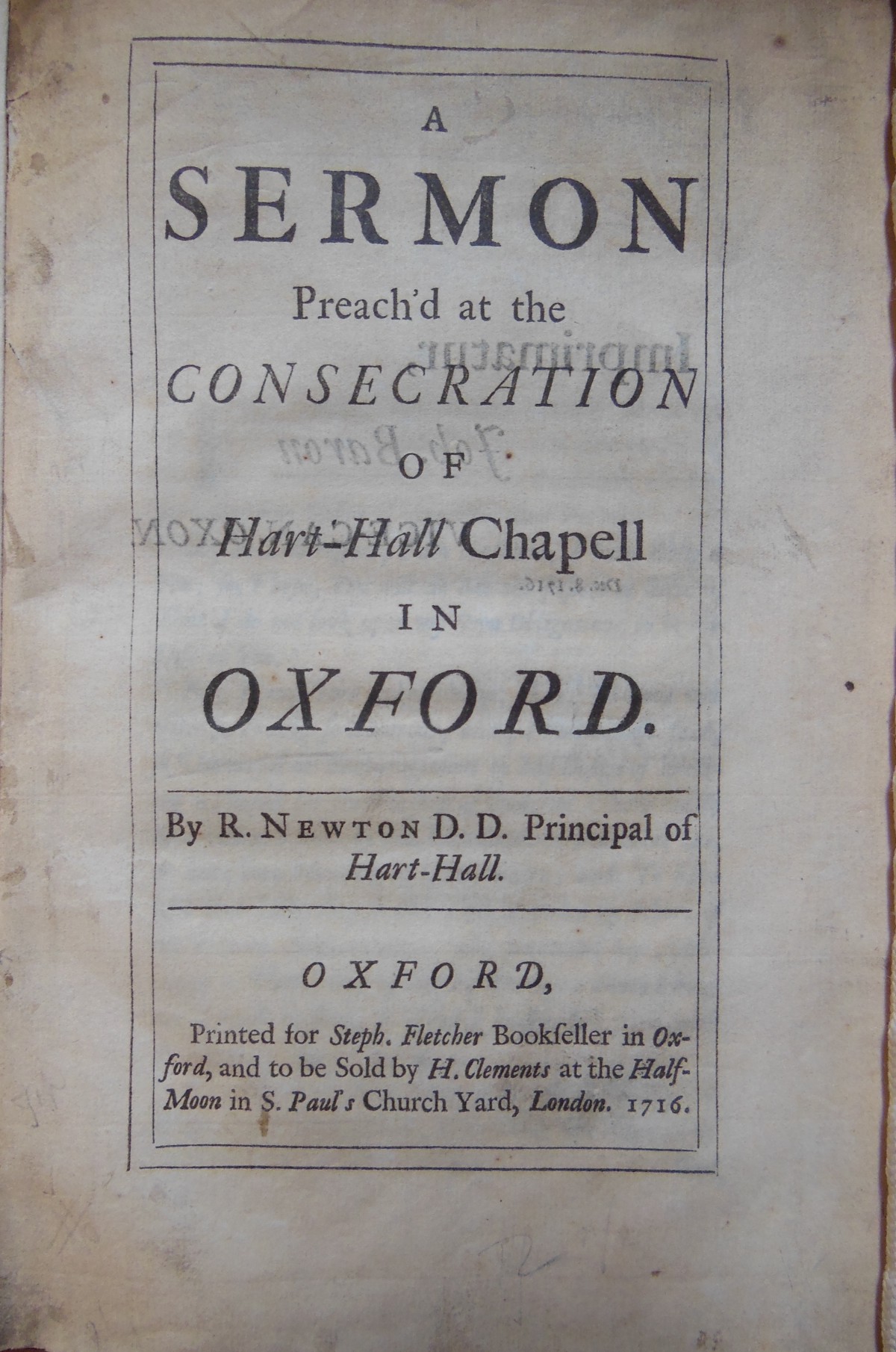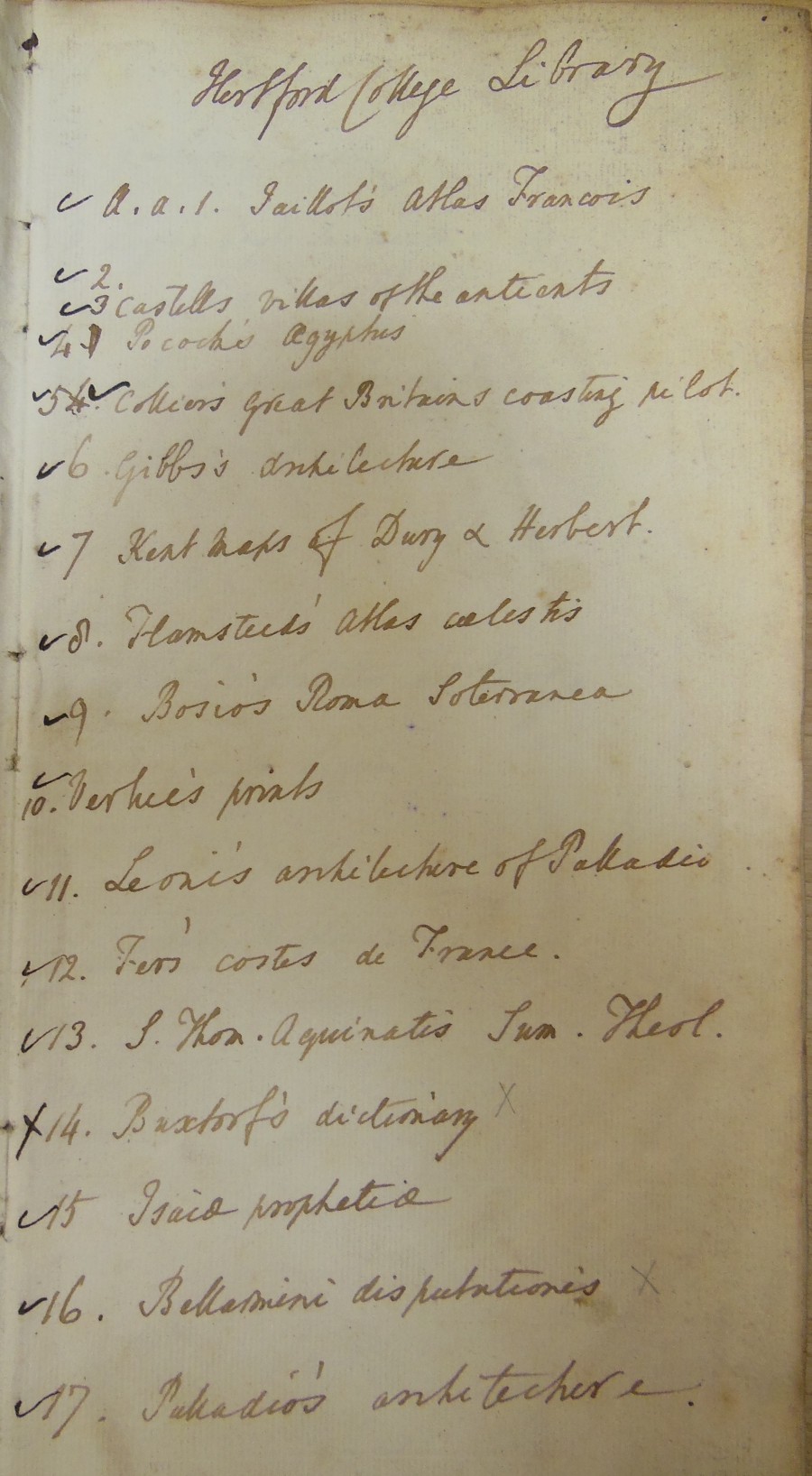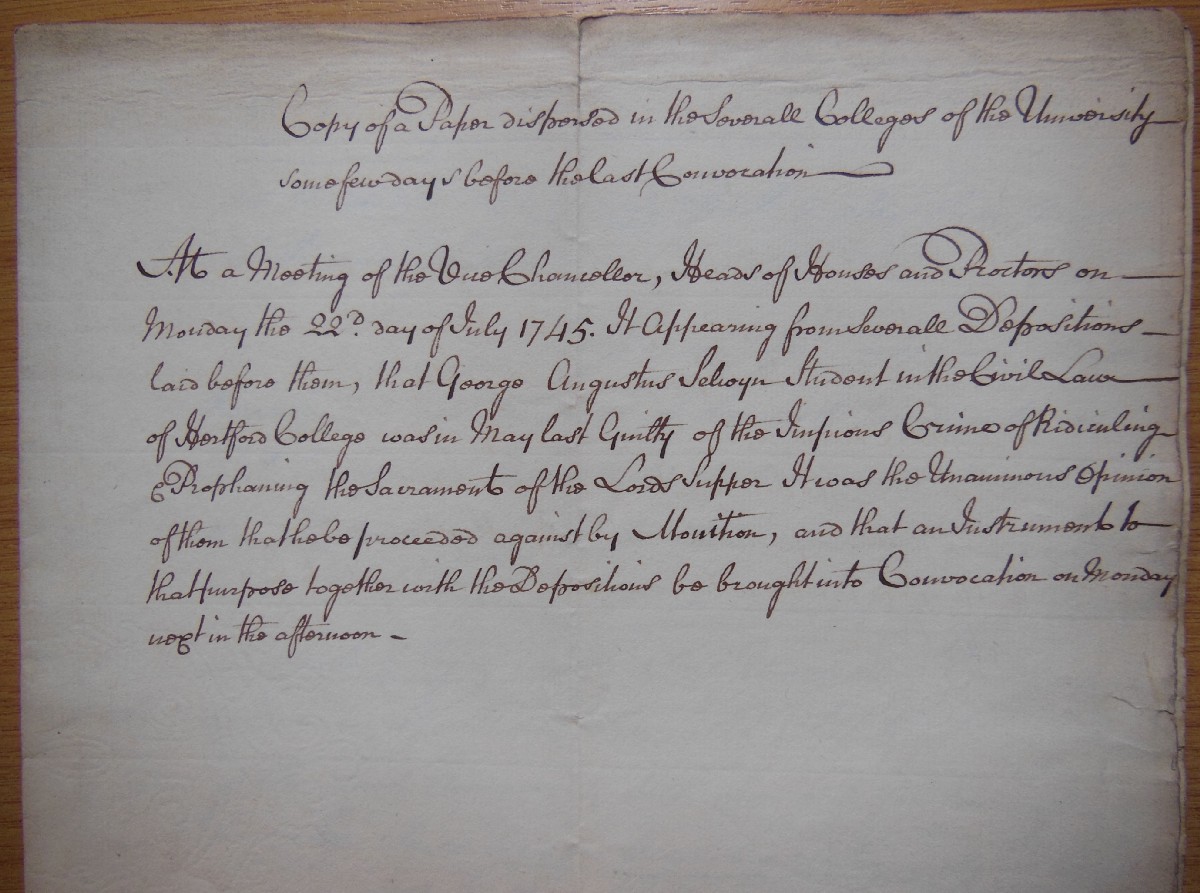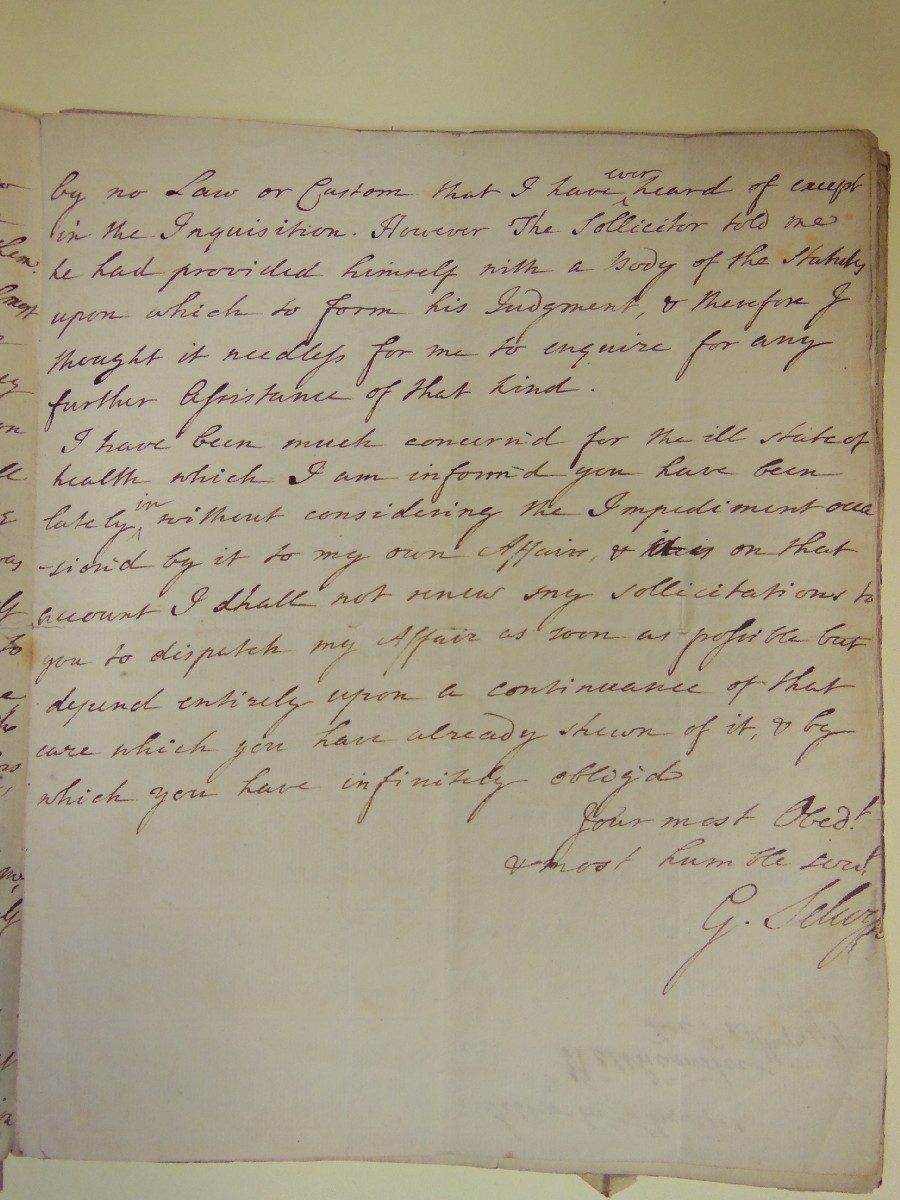Today’s Hertford College is the successor of two medieval halls of the University of Oxford. The site has been the home of Hart Hall, Magdalen Hall (not to be confused with the separate institution of Magdalen College) and a previous ‘Hertford College’ which existed from 1740–1818. Hart Hall was originally established around the 1280s as an academic hall for students studying at the University. It carried on in this form until 1740 when Principal Richard Newton re-formed Hart Hall as an independent college. This first Hertford College was not successful and it was forced to close in 1816.
Hart Hall in the Middle Ages
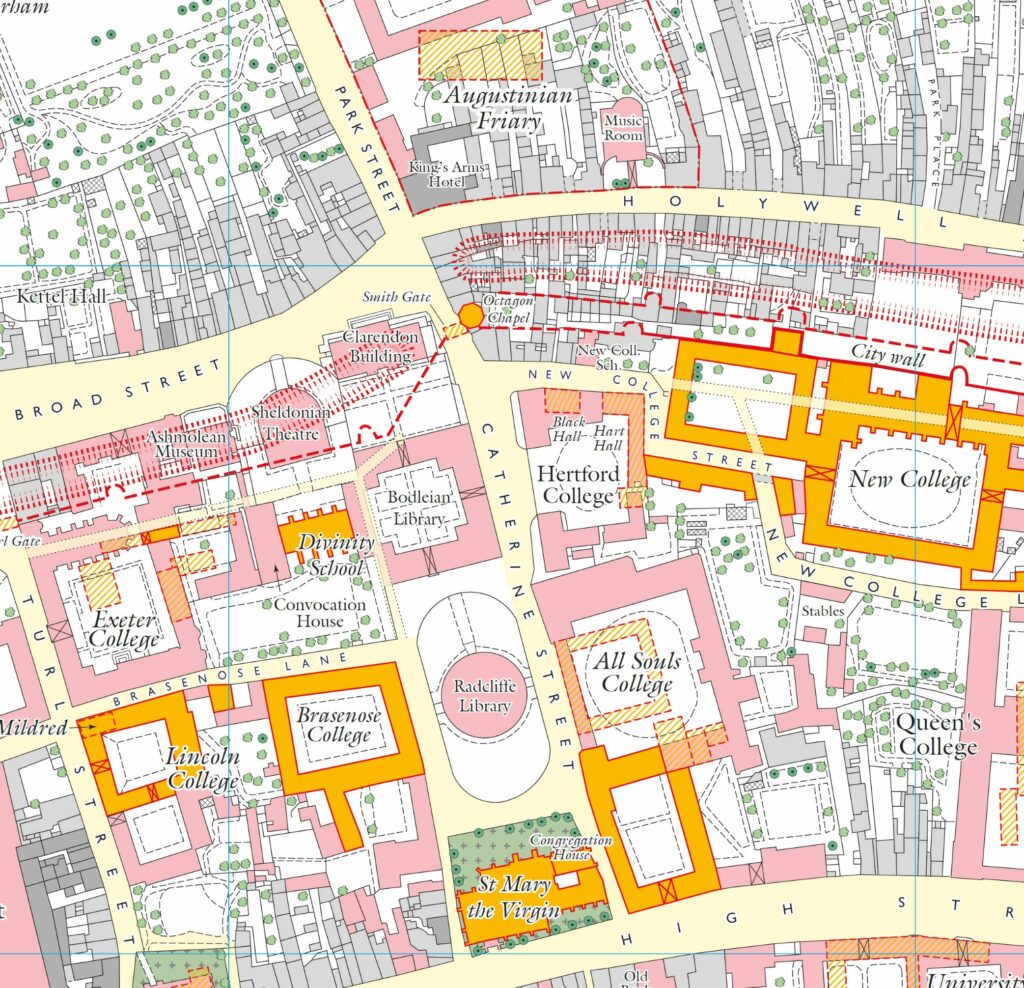
Towards the end of the 13th century Hart Hall was one of five academic halls, or student lodging houses, that were situated around the piece of land in Oxford now occupied by Hertford College. The origins of these halls are unclear, but it is known that at some time in the 1280s Hart Hall, which was situated between Black Hall and Shield Hall, was purchased by Elias of Hertford. In 1312 Walter of Stapledon, the Bishop of Exeter, bought the hall and its land, along with the neighbouring Arthur Hall.
This map of the centre of Oxford shows the site of the present day Hertford College with the locations of Hart Hall & Black Hall shown in the hatched areas. Reproduced by kind permission of the British Historic Towns Atlas © Historic Towns Trust
Bishop Stapledon planned to found a new college, and 1314 he obtained a licence to establish a hall for twelve poor scholars and for a short period Hart Hall housed these students and was known as Stapledon Hall. However the scholars soon moved to the newly founded Exeter College on Turl Street and Hart Hall reverted to its former status. Exeter College retained the freehold and rented Hart Hall as accommodation for much of the 14th century.
During the 15th century the Hall to some extent began to develop as a separate institution, but Exeter College remained the owner of the freehold and continued to exert its influence over the appointment of the Principal, who was usually an Exeter Fellow. Subsequent Principals paid rent to Exeter College until well into the 18th century.
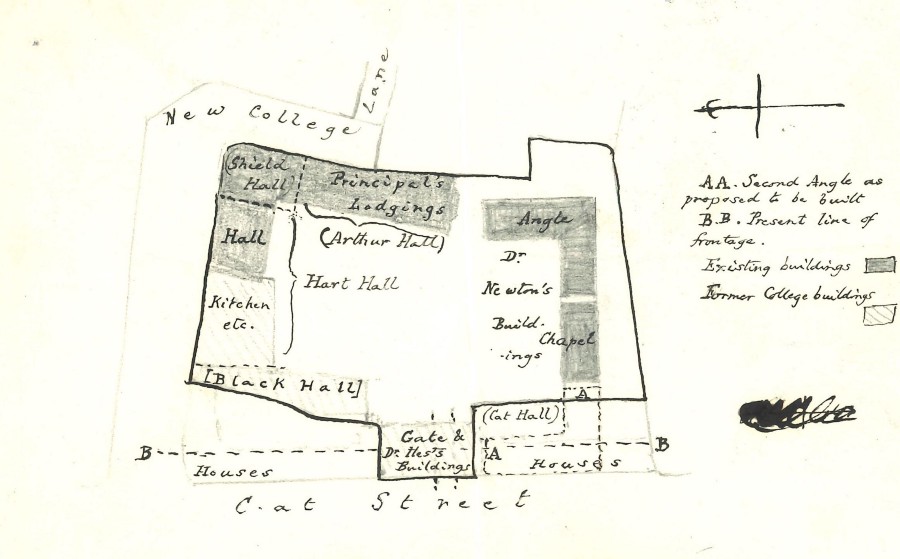
During this period the Hall seems to have been one of the larger and more successful halls; it was, for example, one of the few late medieval halls to have its own library. From the beginning of the 16th century other halls declined as the colleges began to allow more of their students to live in. Hart Hall maintained its numbers, recording 45 students in 1551 but with only one endowment finances were always a struggle.
Hart Hall after the Reformation
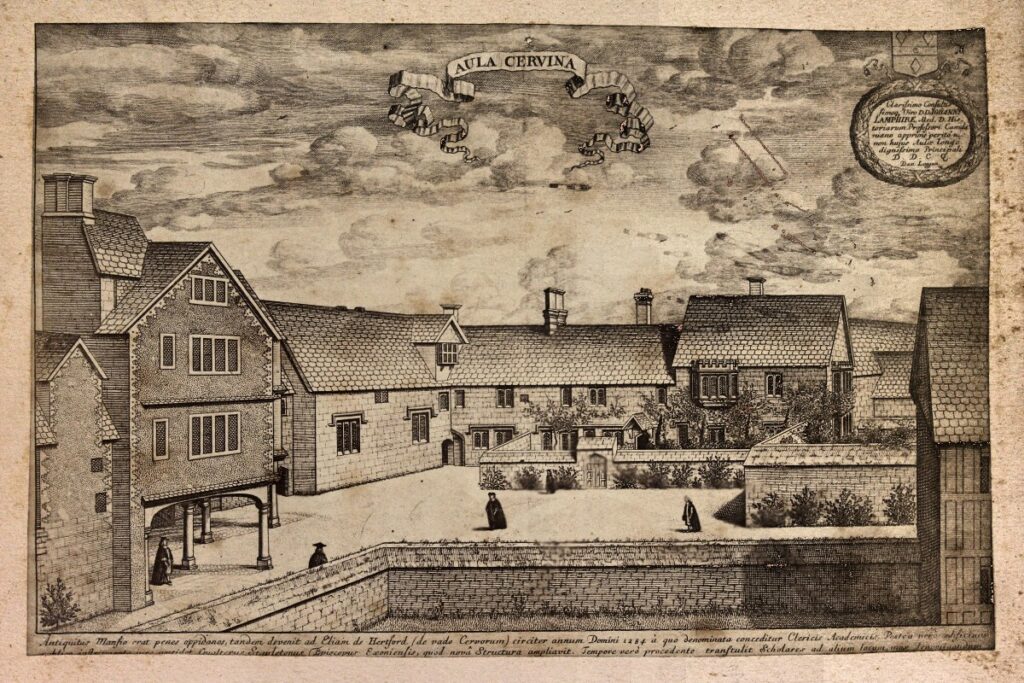
The patronage of Exeter College enabled Hart Hall to survive the shocks of the Reformation and absorb its nearby competitors, including Black Hall and Cat Hall. Although it lost the income from Sir John Bignell’s endowment, the Hall flourished under the tenure of Principal Richard Randall (1559–1599) who carried out substantial alterations and new buildings. He was also the first to make a break with Exeter College, by resigning his fellowship whilst remaining Principal of Hart Hall.
The years leading up to the Civil War saw a decline in numbers at the Hall, and by 1646 it was almost deserted. Following a visitation from the Parliamentary Commissioners Oliver Cromwell took the unusual step of directly appointing Dr Philip Stephens as Principal, who succeeded in restoring the fortunes of the Hall until he was ejected at the Restoration in 1660.
From Hart Hall to Hertford College
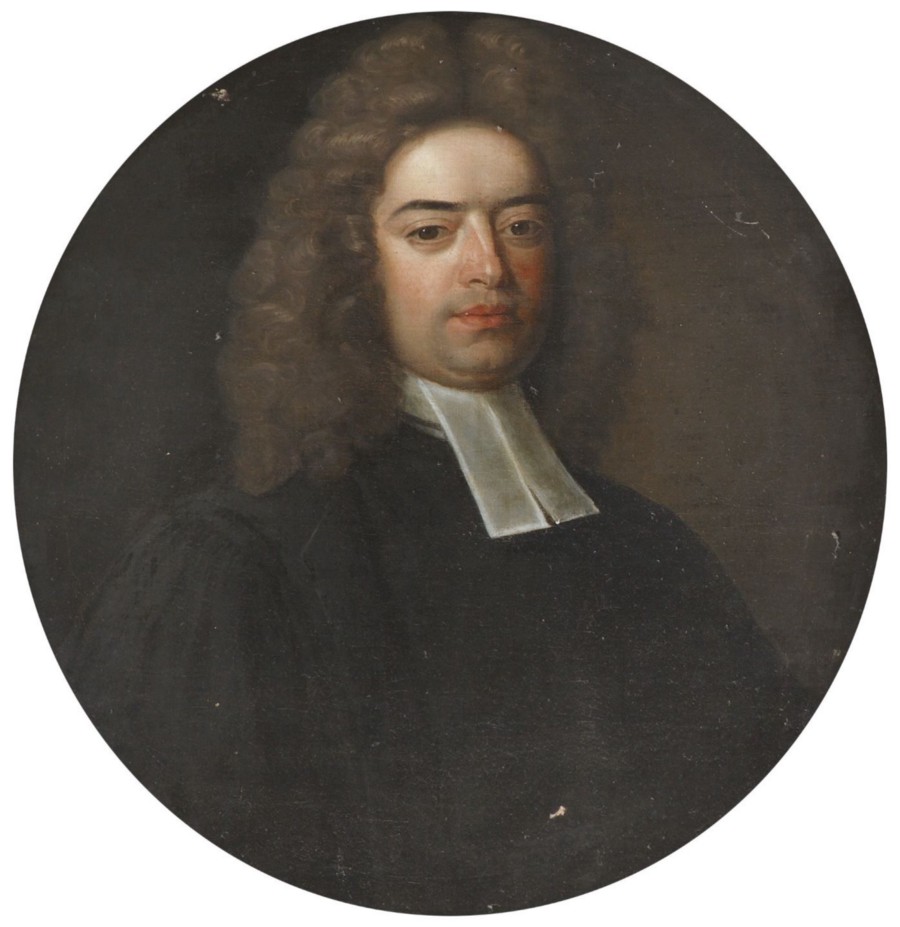
In July 1710 Dr Richard Newton, a former pupil of Westminster School and tutor at Oxford’s Christ Church, became Principal of Hart Hall. This ambitious man immediately began to put his interest in educational and university reform into practice by planning the transformation of Hart Hall. He intended to promote its academic credentials and standing of the students and to create an impressive new set of buildings on the site, although most of these building plans were never carried out. However within six years he had paid off the college’s debts and added some new buildings on the south-eastern corner of the site, as well as a new chapel consecrated in November 1716.
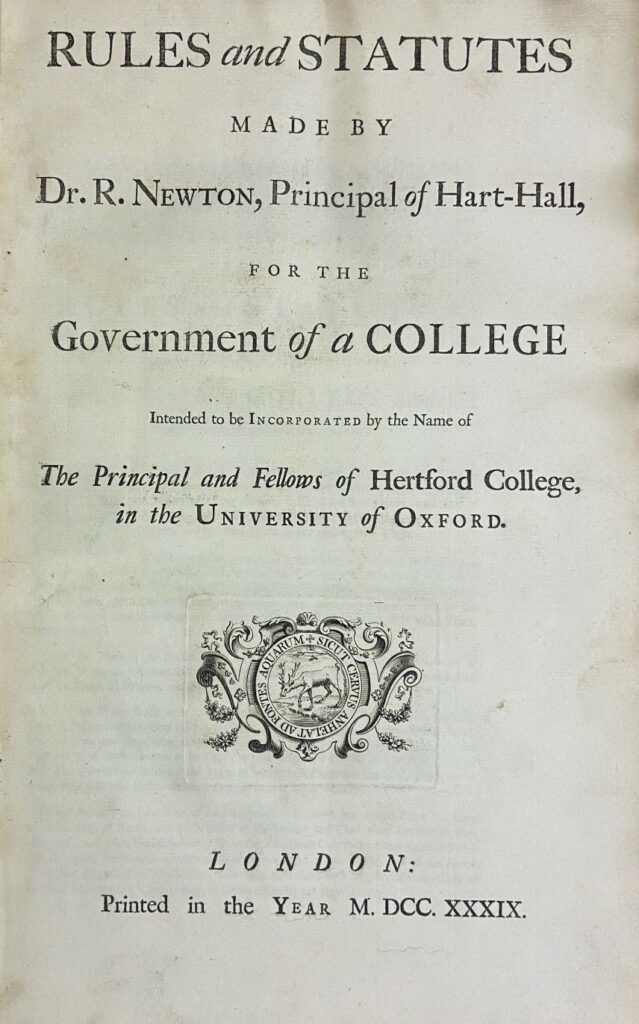
More successful were his plans to incorporate the Hall as a College. In 1739 Newton published his famous ‘Scheme of Disciplines with Statutes intended to be established by a Royal Charter for the education of youth in Hart Hall, in the University of Oxford’. Although these were fiercely opposed by many individuals in Oxford as well as by Exeter College which claimed partial ownership of the site, in 1740 Newton finally obtained a charter and statutes that would allow Hart Hall to be incorporated as an Oxford College. The Statutes were revised in 1748.
Dr Newton’s reforms
A lack of endowments meant that the college’s financial position was always precarious. Right from the start as Principal of Hart Hall, Newton exercised a ruthless control over college administration and finances. As a large proportion of his students were studying for Holy Orders, and so did not generate much of an income for the college, he was keen to attract Gentlemen Commoners and the higher fees that they paid. To this end he was also determined to make his college a model of learning, good behaviour and Christian morality.
“It is injoined, That no Person be continued a Member of this House, whose Iregular, Immoral, or Irreligious Behaviour in it shall render the Methods of Education described in these Statutes Fruitless to Himself, and his Conversation Dangerous to the Rest of the society; And that the Principal and Tutors be watchful to observe the First Steps which young Men take to any Evil Habits, and endeavour, by proper Representations and Penalties, to prevent their Ruin.”
Newton’s Rules & Statutes, Sect. X: Of Behaviour
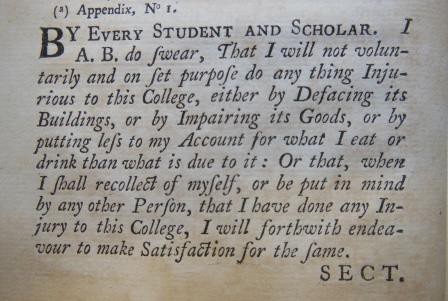
All of the students, including Gentlemen Commoners, had to agree to abide by Newton’s rules for governing the college. They were closely supervised and expected to work hard and live frugally in college, avoiding the temptations of the town and its coffee houses, of which he particularly disapproved.
Newton’s reintroduction of twice-weekly disputations, numerous lectures and a weekly speech day and essay, kept the students more than fully occupied — to the extent that in 1725, a group of students rebelled against his strict regime and tried (mostly unsuccessfully) to migrate to other colleges.
The decline of the first Hertford College
Although Dr Newton eventually won the battle for incorporation and was able to a certain extent impose his model of academic life, he never obtained enough endowments to sustain this incarnation of Hertford College. After his death in 1753 the college declined, the number of Fellows and tutors was reduced and by 1810 there were virtually no matriculations. Eventually the underfunding and inability to attract Fellows and even a Principal led to the de facto collapse of the college. Any kind of meaningful academic and college life, and even the buildings themselves, deteriorated.
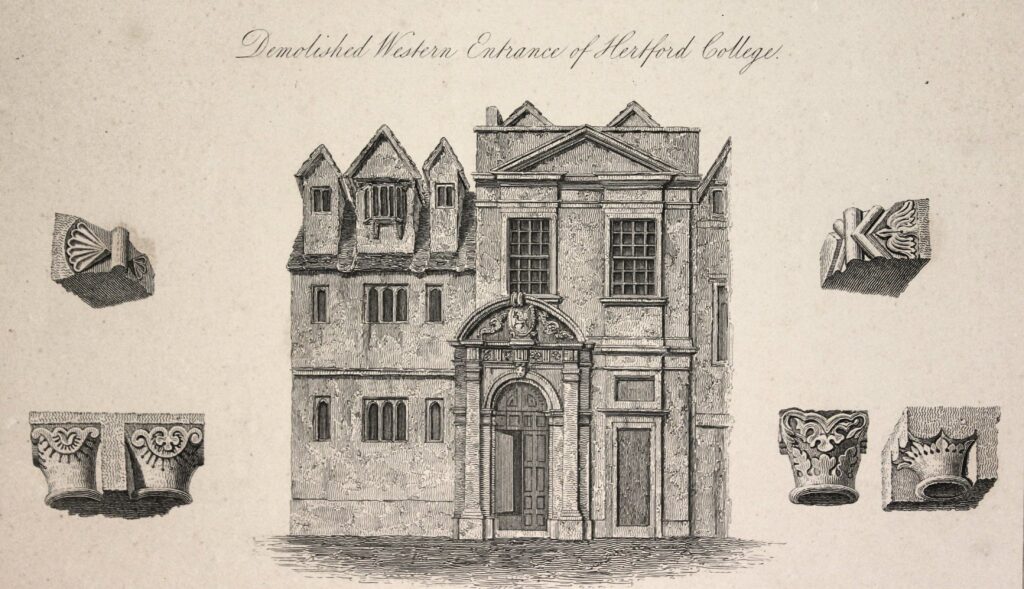
The Fellows of Magdalen College, who had long been looking for a means of taking back the site occupied by Magdalen Hall, saw their opportunity and on 4 May 1816 a University Inquisition dissolved Hertford College. The college and its assets were transferred to the Crown, and the last remaining Fellow was pensioned off.
In due course an Act of Parliament granted the property to the University in trust for Magdalen Hall, which moved to the Catte Street site after a fire destroyed its own buildings next to Magdalen College in 1820. Magdalen Hall continued until its incorporation as a full college in 1874 when it once again took the name of Hertford College.
The Archives
Sadly only a small collection survives from this period, and this relates primarily to the Principal Newton’s Hertford College. It includes the Foundation Statutes and Rules devised by Newton, and most importantly the early 19th century library catalogues. Descriptions for these records can be viewed via our online catalogue , along with research guides to our archive holdings and specialist topics.

